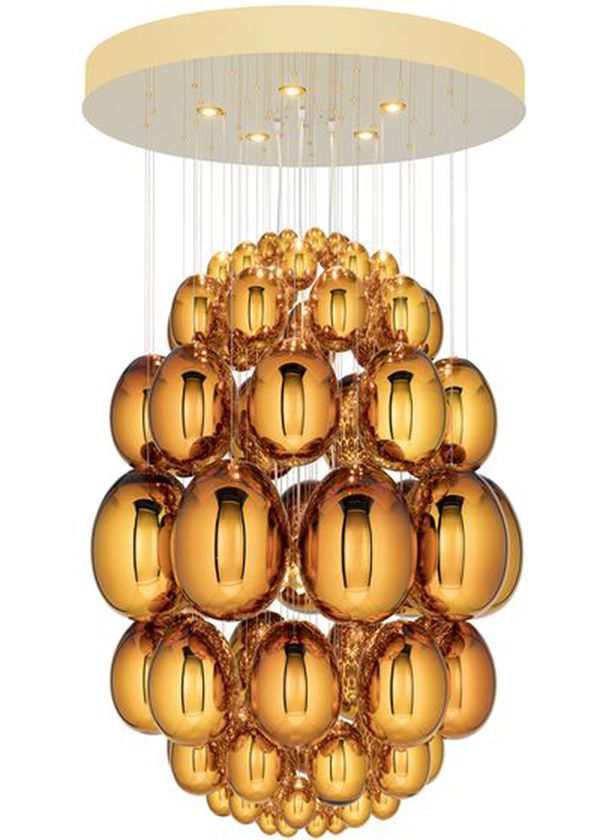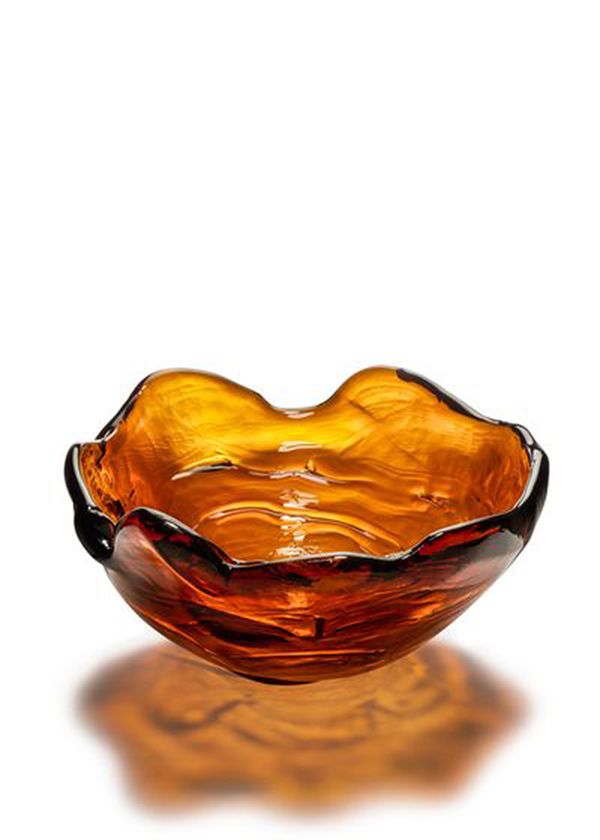
Heart of glass: creation through craftsmanship
Picking up a handful of sand on a beach, the minuscule grains falling in streams between your fingers, it’s hard to imagine how these particles can be transformed into solid glass.
Words Imogen Smith

Through the use of intense heat and deft craftsmanship, the mass of tiny sand granules is manipulated into myriad shapes; from gravity-defying decorations to domestic-use glassware. No matter the end product, glassmaking requires expertise acquired through years of learning. It’s this level of tradition that underpins the creations made by Czech glassmakers, Lasvit.
Founded in 2007, Lasvit is young by comparison with the centuries-old heritage of Bohemian glassmaking that defines each of its creations. In a short time, Lasvit has positioned itself as a leading designer and manufacturer, working on custom projects for luxury boutique hotels and public spaces.
Rooted in tradition, Lasvit strikes a fine balance between its Bohemian spirit and a commitment to creativity and innovation. Employing this mindset across all projects, the company has also partnered with renowned designers, including Ross Lovegrove, Nendo Studio and Michael Young.
‘I would describe what we do as ‘Bohemian perfection.’ This is a slight contradiction but it’s how I think – Bohemian glass is an intricate art form that stays true to its roots,’ says Maxim Velčovský, art director at Lasvit.

‘Bohemian glass is an intricate art form that stays true to its roots’

Now part of the Czech Republic, Bohemia became famous for its glassware during the Renaissance, thanks to its abundant supply of resources such as the potassium compound potash and chalk. Combining these two elements, glass-workers found that the complexion and stability were superior even to Italian Murano glass. Czech glassware thus became highly sought after and was considered as precious as jewellery: decadent and sculptural.
With major shifts in the political landscape and the rise of communism in the 1940s, the glassmaking industry felt a significant impact. Factories and schools were forced to close but the tradition of the craft lived on and, today, continues to thrive, thanks to Lasvit.
Together with the famous Ajeto glassworks in Lindava, the company delivers Bohemian glass to clients around the world, catering to increasing demands while also nurturing the next generation of glassmakers through local schools.
Building for the future, Maxim has a vision for the brand: ‘My idea was to root the company and to build a headquarters for Lasvit – including a furnace and workshop as a base for our team.’
This new space – designed in the style of a traditional countryside house, with contemporary touches of glass – is due to open in 2019 and will be coupled with the refurbishment of an old glass school to encourage specialist learning.

‘The experimentation level is slightly limited because ultimately the pieces still need to be affordable and usable for our customers.’

Earlier this year, Lasvit unveiled an abstract installation of hundreds of varying-sized glass bubbles. Three walls of the Butterfly office complex in Karlín are now bespeckled with bubbled constellations, assembled in such a way that when the viewer steps back, a face is revealed. This playful use of glass is something Maxim has demonstrated before, on the 17-metre Diver installation in South Korea’s Lotte World Tower, which depicts a pearl diver suspended amidst hanging streams of glass baubles.
For each large-scale project, time is fundamental. As Maxim says, ‘Sometimes, it will take up to three years! It depends, but we allow a couple of months because it takes a lot to assemble 10,000 components and each individual one has to be engineered in such a specific way.’
Each project Lasvit works on is linked to an architectural space, and it’s up to Maxim, along with a team of creative partners, and the client to work with the space and respect its role within the process.
‘The collections are a slightly different world to the projects,’ says Maxim. ‘The experimentation level is slightly limited because ultimately the pieces still need to be affordable and usable for our customers.’
These pieces are a way for Lasvit to spread the traditions of Bohemian perfection, and it’s through its revitalised approach to an age-old practice that Lasvit is able to continue to stretch beyond traditional conventions.


